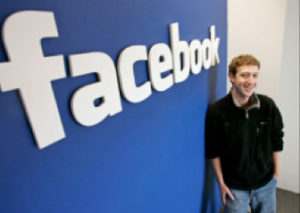Heads and Tails, the two sides of Mark Zuckerberg’s new credit economy
Just as soon as we highlighted the Facebook Credit system for developers, the impact of this new currency is illustrated from two different sides of the coin.
 The first is just how big the FB Credit economy is. Take just one company – Zynga – and their dealings with Facebook. To be fair they do have one of the biggest applications on Facebook (Farmville) but their suite of social games has a turnover of some $100 million per year. Their five year deal with Facebook will mean that a significant amount of that income will go through Facebook – and that means there’s a 30% transaction fee when end users buy credits to spend in Farmville and other games.
The first is just how big the FB Credit economy is. Take just one company – Zynga – and their dealings with Facebook. To be fair they do have one of the biggest applications on Facebook (Farmville) but their suite of social games has a turnover of some $100 million per year. Their five year deal with Facebook will mean that a significant amount of that income will go through Facebook – and that means there’s a 30% transaction fee when end users buy credits to spend in Farmville and other games.
That’s just one company – now consider that Facebook has over 550 million active applications, all of which can tap into the credits (and be tapped for 30% as well). Tell me that’s not a viable currency with hard cash backing it up.
Not everyone is happy, as Robert van Gool pointed out to the Wall Street Journal. It’s the 30% cut that rankles him and many other developers. While this percentage cut has been given a certain legitimacy in terms of selling applications to smartphones (via the Android marketplace or the Apple iTunes app store), it’s proving hard to swallow at a micro-transaction level (credits are ten US cents a piece).
And the 30% credit cut is a magnitude away from the 3% normally charged by merchant accounts for credit and debit card transactions that have previously been used by developers. Yes there is plenty evidence that Facebook credits make for a sticker application and greater turnover in purchases and use of credits – but it also means handing a large cut to Facebook. So even if there is more money coming in, there’s the human nature of seeing even more money go out.
There’s a lot to keep in mind when trying to balance money online – and confidence of every party involved is one of them. We talked before about how the end users need to trust the system, here’s clear evidence that developers will need hand holding as well.
Given the likely billions of dollars worth of credits that could flow through the system over the next few years, they can either go down the route of holding hands, or just use the “we’re the biggest in the room” argument. I wonder which it will be, and how much that will influence other areas of their new credit economy?
 Powered By Telepin: Tunisie Telecom Revolutionizes Its Charging System - Read More
Powered By Telepin: Tunisie Telecom Revolutionizes Its Charging System - Read More